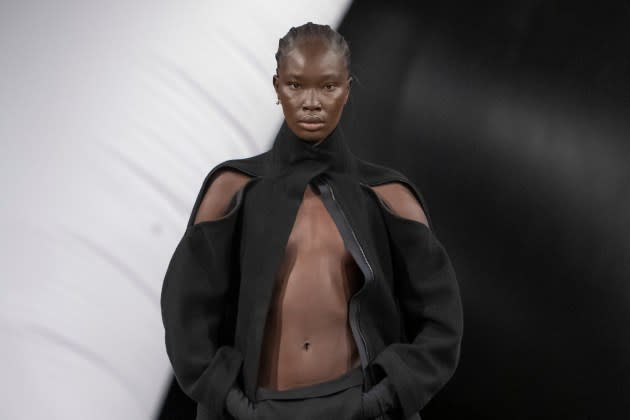Embrace the Elegance of Multiculturalism With Eastern Use
Checking out the elaborate globe of Eastern put on opens up a world of social richness and artistic expression that goes beyond boundaries and time - eastern wear pakistan. From the dynamic shades of traditional Chinese qipaos to the regal style of Pakistani shalwar kameez, each garment envelops an unique story that speaks quantities about the heritage and personalizeds of its beginnings. As we navigate through the tapestry of Eastern fashion, we uncover surprise gems of creative thinking and custom that not just decorate our bodies but likewise connect us to a deeper feeling of belonging and recognition for the diverse tapestry of international culture
Beginnings of Eastern Wear
Originating from old human beings in Asia, Eastern wear includes an abundant tapestry of practice and social significance. The origins of Eastern wear can be mapped back to numerous areas such as India, China, Japan, and the Center East, where clothes was not just a way of covering the body yet also a representation of social status, occupation, and religious beliefs.
Eastern wear has evolved over time, mixing historic personalizeds with modern-day influences to develop a diverse variety of designs that satisfy various occasions and preferences. From complex embroideries to dynamic colors, each garment informs an one-of-a-kind tale of its social origins, making Eastern wear an icon of heritage and identification that proceeds to captivate individuals worldwide.
Importance in Standard Clothes
Traditional outfit in Eastern cultures brings extensive symbolism that reflects the values, ideas, and heritage of varied areas. Each garment, shade, and design element in Eastern conventional clothes holds substantial social definition.
Moreover, conventional outfit is commonly put on throughout unique celebrations and events to recognize traditions and display social pride. For example, the vivid hues and detailed needlework on a Pakistani shalwar kameez used throughout wedding celebrations commemorate happiness and celebration. Recognizing the symbolism behind Eastern traditional attire not just includes depth to the clothing yet additionally promotes gratitude for the rich social heritage and values installed within these garments.
Impact of Eastern Style in the West
The fusion of Eastern style components with Western styles has developed an exciting fad in the worldwide apparel industry. For many years, Eastern style influences have made a significant effect on Western fashion, with designers and style lovers alike drawing ideas from the abundant customs of countries like India, Japan, and China.
One of one of the most recognizable influences of Eastern style in the West can be seen in the popularity of conventional Asian garments such as the bathrobe, saree, and qipao. These garments have been reimagined and adapted to fit Western tastes, leading to distinct and fashionable combination items that blend the most effective of both worlds.
In addition, Eastern themes, needlework techniques, and color schemes have likewise located their method right into Western fashion collections, adding a touch of exoticism and refinement to contemporary layouts (eastern wear pakistan). The seamless combination of Eastern and Western style components not only showcases multiculturalism however additionally fosters imagination and innovation in the ever-evolving world of style

Modern Interpretations of Eastern Styles
How have modern fashion developers reimagined and interpreted Eastern designs for a modern target market? Recently, there has actually been a rise in contemporary analyses of conventional Eastern garments that deal with the tastes of a globalized globe. Designers are mixing classic Eastern silhouettes, intricate needlework, and abundant materials with modern cuts, innovative textiles, and vibrant colors to create a fusion of East-meets-West style.
One prevalent fad in modern analyses of additional resources Eastern designs is the incorporation of standard motifs and patterns into Western apparel pieces. This blend leads to one-of-a-kind garments that celebrate the rich heritage of Eastern societies while appealing to a wider target market. Additionally, developers are try out mixing and matching various Eastern components, such as pairing a standard kurta with modern-day denim pants or layering a saree with a structured blazer.
Tips for Styling Eastern Apparel
When styling Eastern garments, consider integrating contemporary accessories to produce a well balanced and diverse appearance. Typical Eastern garments, such as sarees, kurtas, and sherwanis, can be raised by including modern-day aspects like statement jewelry, sleek handbags, or trendy footwear. Blending standard Eastern clothes with contemporary pieces can lead to a elegant and distinct ensemble that showcases a blend of societies.
An additional suggestion for styling helpful hints Eastern garments is to have fun with patterns and colors. Don't be terrified to experiment with elaborate designs or vibrant colors to make a style statement. Mixing and matching different patterns within the same outfit or pairing contrasting colors can add visual passion and deepness to your look.
Moreover, take note of the fit of the Eastern garments. Customizing plays a critical duty in just how the attire drapes on the body. Make sure that the clothes fits well and complements your body form to improve your total appearance. Additionally, do not be reluctant to accessorize with traditional Eastern precious jewelry, such as jhumkas, bangles, or maang tikka, to finish your set with a touch of credibility and beauty. eastern wear pakistan.
Verdict
Finally, Eastern wear deals an unique possibility to value and honor Your Domain Name the varied societies and customs of Asia through style. By recognizing the origins, meaning, and affects of typical outfit, people can embrace the charm of social diversity and include Eastern styles into their closet with respect and adoration. Via modern-day analyses and thoughtful styling, we can continue to commemorate the abundant heritage and craftsmanship of Eastern fashion in a purposeful way.
Each garment, color, and layout element in Eastern typical attire holds considerable social definition. Understanding the meaning behind Eastern traditional clothes not just includes deepness to the apparel but also promotes admiration for the abundant social heritage and worths installed within these garments.
